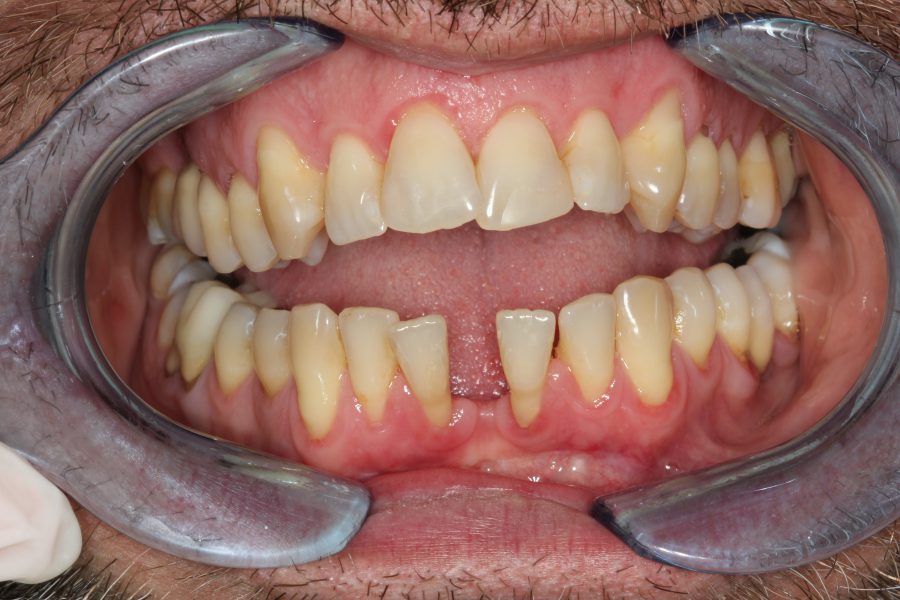PERIODONTOLOGY
Periodontitis is a multifactorial inflammatory disease of microbial etiology, which causes destruction of periodontal tissues (“gums and bone” surrounding the teeth). Microbial plaque on a susceptible host (genetic profile) is the etiologic factor of the disease. Depending on its extent it may be generalized or localized and depending on its severity it may be slight, moderate or advanced (Armitage Classification 1999).
Periodontitis manifests with symptoms similar to gingivitis (redness, edema and bleeding of the gums, halitosis) but also with loss of bone support as well as deepening of the gingival sulcus (formation of periodontal pocket). Consequently in many cases, especially in cases of advanced disease tooth mobility is also evident. In fact, due to its largely painless nature, often the most alarming symptom noticed by patients is tooth mobility.
Diagnosis and classification is based on careful and meticulous clinical and radiographic examination, which is completed by performing a periodontal chart (“mapping” the effects of the disease around each tooth). Based on the chart findings as well as the medical and dental history of the patient a personalized treatment approach is planned. Periodontal treatment is a staged approach.
At first, acute symptoms are being addressed (i.e. abscess) and local factors that contribute to plaque accumulation are being modified (i.e. repairing overhanging restoration margins, filling open tooth cavities). Patient motivation and instruction in optimal oral hygiene is also a fundamental part of the treatment. Following that, plaque and tartar attached to the tooth surface above and below the gums are being removed by use of ultrasonics and hand scalers. This procedure known as scaling and root planing (SRP) is a non-surgical procedure, which is performed under local anesthesia in a painless manner. Typically a quadrant or half of the mouth is being completed during each session. Approximately 4 weeks following the last session a reevaluation of the periodontal tissues is done and a new periodontal chart is completed. At this point depending on the chart findings the need for further treatment is investigated. More advanced treatment procedures if needed may involve the use of lasers or surgical procedures of resective or regenerative nature.
By completion of the active treatment phase described above patients enter the maintenance phase. During this phase recall appointments are made every 3-6 months depending on the case depending on the gravity of the disease.. These one-time appointments are necessary in order to monitor disease progression and promptly identify disease relapse (through periodontal chart) as well as maintain periodontal health by performing thorough prophylaxis (removal o plaque and tartar).

